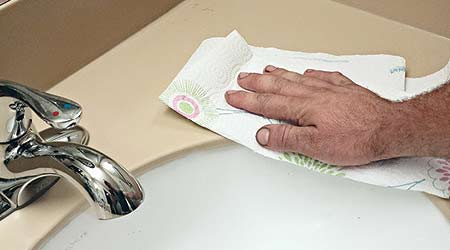
Managers that know what they are up against can simplify the restroom cleaning process
It is a fact of life that we all use the restroom. And when nature calls, we expect those restrooms to be clean, functional and operational. As facility cleaning executives overseeing custodial operations, we have the power to meet these expectations.
You might think it’s common knowledge that restrooms garner some of the most complaints from building occupants. But in fact, some studies say that only 80 percent of facilities managers know that restrooms influence tenant satisfaction. Worse yet, research shows that the cleanliness of restroom facilities is greatly lacking.
A study published in “Applied and Environmental Microbiology” assessed the microbes present in public restrooms. Scientists actually discovered genetic traces of more than 77,000 distinct types of bacteria and viruses in these spaces.
It’s stats like this that support the importance of cleaning and disinfecting. But even after cleaning, experiments prove that these surfaces don’t always remain microbe-free. According to researchers studying restrooms at a San Diego State University, California, within one hour of cleaning and disinfecting, bathrooms were completely re-contaminated with microbes and fecal bacteria.
Recontamination is one of the reasons these spaces often rank high on manager’s lists of the most challenging areas of a facility to keep clean. In fact, 56 percent of Facility Cleaning Decisions readers struggle with keeping restrooms up to par.
What types of bacteria and viruses are found in restrooms?
A list of 77,000 bacteria and viruses is hard for a facility cleaning manager to comprehend. It’s easier to accept the more prevalent contaminants found in a restroom: fecal bacteria, influenza, streptococcus, E. coli, hepatitis, Methicillin-resistant Staphylococcus aureus (MRSA), salmonella, shigella and norovirus.
Indeed, there are so many germs and variables present in a restroom that it may not be possible to remove all contaminants. The facility manager’s best option is to plan to address and treat as many bacteria, microbes and contaminants as possible, then supply appropriate products and training to achieve the goal.
Most Contaminated Restroom Surfaces

 Celebrating BSCAI's 60th Anniversary eBook
Celebrating BSCAI's 60th Anniversary eBook The Down and Dirty on Cleaning in Virus Season
The Down and Dirty on Cleaning in Virus Season How Surfactant Use is Expanding in Commercial Cleaning
How Surfactant Use is Expanding in Commercial Cleaning